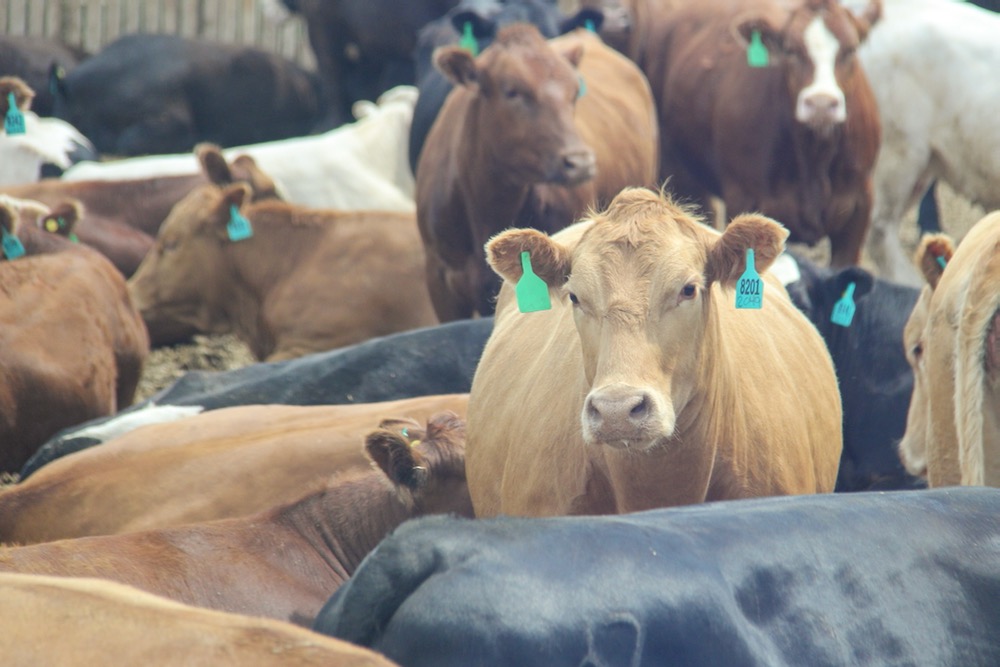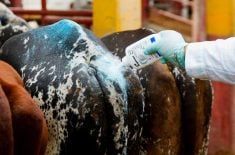CNS Canada –– The seven-year saga of U.S. country of origin labelling (COOL) rules and their adverse impact on Canada’s livestock sector may be nearing its final chapter, but the conclusion still needs to be written.
After numerous complaints and appeals with the World Trade Organization, the COOL regulations in place since 2008 have been deemed discriminatory against Canada and Mexico.
However, the U.S. government has not yet repealed the measures and it has finally come to the point where the WTO will soon decide just how much in retaliatory tariffs can be imposed.
Read Also

U.S. livestock: Chicago cattle futures mixed ahead of Thanksgiving holiday
Chicago | Reuters – Chicago Mercantile Exchange’s live cattle futures were mixed on Tuesday, with nearby contracts extending the previous…
Canada is requesting tariffs of over C$3 billion annually on a number of products, while Mexico places its number at US$713 million. However, the U.S. claims both requests are excessive, and that the combined total should be only US$91 million.
A WTO arbitration panel met to hear from all sides earlier this month and will release its final ruling at the end of November, after dealing with written questions and responses. The numbers announced then will no longer be appealable.
John Masswohl, director of international relations with the Canadian Cattlemen’s Association, said the ideal situation would see the U.S. repeal COOL before the WTO ruling.
The U.S. House of Representatives has already passed a bill to repeal COOL, but the matter is still before the U.S. Senate.
If the Senate repeals COOL to Canada’s satisfaction, the dispute ends there, said Masswohl. However, if the Senate does not repeal, or if it passes a revised bill that is still not acceptable, Canada will then be in a position to begin imposing tariffs at the level decided by the WTO.
“Once the WTO has determined the authorized level of retaliation, Canada will choose how and when to impose retaliatory measures,” Agriculture and Agri-Food Canada’s media relations department said in an emailed statement.
“The onus is now on the U.S. to prove to the WTO that they’ve complied,” said Masswohl. “We’re pretty confident in our numbers.”
However, one wrinkle on the Canadian side is the fact that the country is in the ongoing federal election campaign.
When the allowable tariffs are announced by the WTO, it will then be up to the Canadian government to decide which tariffs to put on which products.
Masswohl said the livestock sector was working with all of the parties, but added that a transition would require a time of briefing “not just on this issue, but on all issues.”
As to where any collected tariffs would go, Masswohl said the reality was that any retaliatory measures would likely act as a trade barrier.
“The reality is that if there is a 100 per cent tariff on a product, who will import it?” he asked.
As a result, he expected U.S. exporters of any of the products on the proposed tariff list — which includes goods ranging from wine to breakfast cereal — will be lobbying to have COOL repealed.
“There is a good incentive for the U.S. to move well in advance.”
— Phil Franz-Warkentin writes for Commodity News Service Canada, a Winnipeg company specializing in grain and commodity market reporting. Follow CNS Canada at @CNSCanada on Twitter.
















